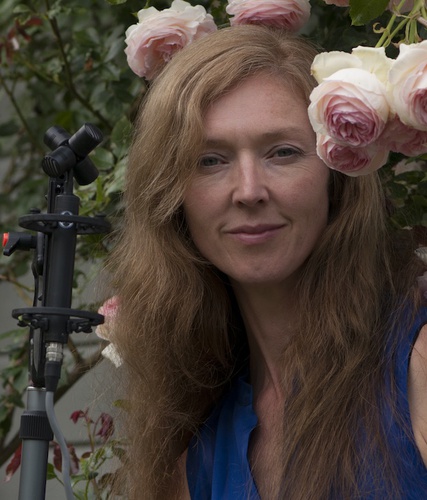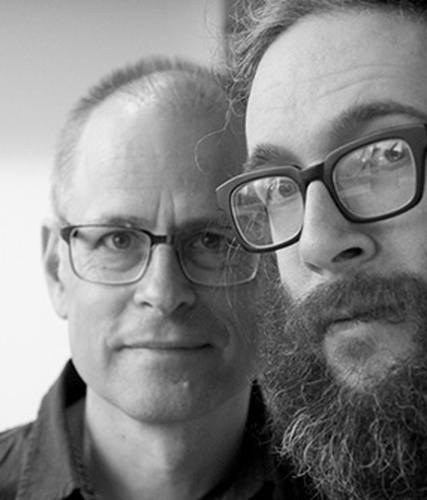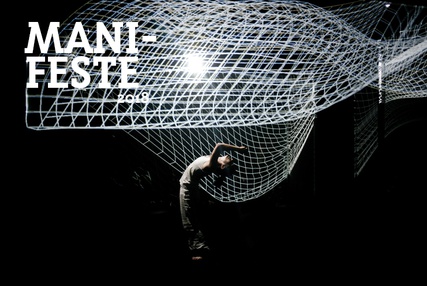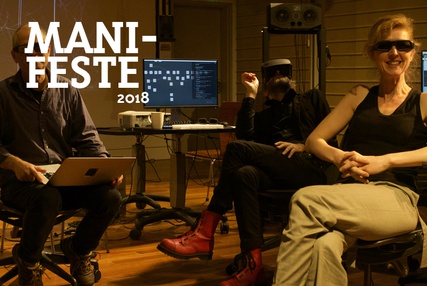Pockets of Space
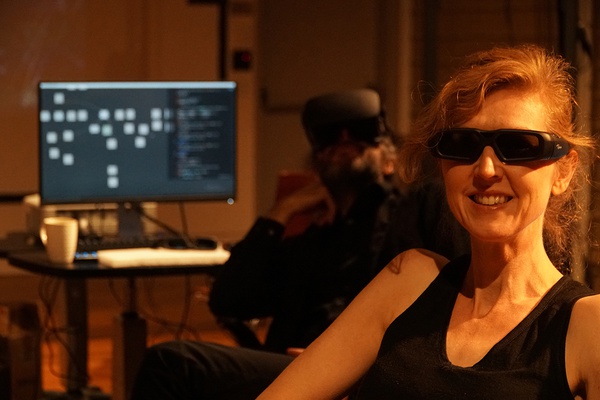 Quelques points apparaissent, comme des graines, sur le vaste écran de projection en trois dimensions. De ces points naissent des lignes, comme tracées à la main, qui prolifèrent et s’entremêlent jusqu’à tisser une image en relief parfaitement reconnaissable. Cette « poche d’espace » bientôt se dissout comme elle s’était construite, en lignes fuyantes qui se démêlent puis se remmêlent à nouveau pour former une nouvelle image, une nouvelle « poche ».
Quelques points apparaissent, comme des graines, sur le vaste écran de projection en trois dimensions. De ces points naissent des lignes, comme tracées à la main, qui prolifèrent et s’entremêlent jusqu’à tisser une image en relief parfaitement reconnaissable. Cette « poche d’espace » bientôt se dissout comme elle s’était construite, en lignes fuyantes qui se démêlent puis se remmêlent à nouveau pour former une nouvelle image, une nouvelle « poche ».
De même, la bande-son, qui semble tout d’abord abstraite et sans aucun lien avec le monde réel, se focalise peu à peu, semble prendre vie dans une articulation de l’espace sonore en trois dimensions. Si elle paraît suivre des évolutions similaires à celles de l’image, elle ne l’imite pas pour autant, parfois l’évoquant en contrepoint, parfois s’en éloignant. Mais, à mesure qu’image et son se précisent, le spectateur/auditeur a de plus en plus le sentiment de faire partie intégrante d’un paysage bien réel.
Image comme son émergent d’un algorithme génératif – chaque scène, chaque poche se déploie en le paysage qu’elle décrit, bien souvent à l’orée de l’urbs, livrée aux caprices de la nature. Au sein de chaque paysage s’agite comme une esquisse de mouvement, inspiré du vivant – le battement d’une aile d’oiseau dans le ciel, le sautillement d’un écureuil dans un arbre, la reptation d’un chat dans une allée, un enfant grimpant sur l’échelle d’un toboggan. Pockets of Space veut attirer l’attention de ses spectateurs/auditeurs sur la pure beauté de ces processus qui transforment le paysage urbain, jusqu’à parfois le réduire en ruine.
Les enjeux artistiques
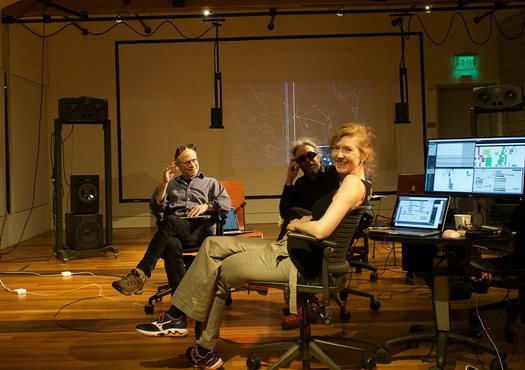 Le premier défi artistique qu’a soulevé Pockets of Space est inhérent à toute collaboration – surtout lorsque celle-ci en est à ses premiers pas, comme ici. Au cours des discussions préliminaires, la compositrice Natasha Barrett et les deux compères de l’OpenEndedGroup, Marc Downie et Paul Kaiser, se sont toutefois aperçus que leurs manières de travailler étaient singulièrement similaires : le matériau brut qu’ils captent (image ou son) est minutieusement démonté ou déconstruit jusqu’à en dégager ses « briques » élémentaires – lesquelles sont ensuite réassemblées pour bâtir un nouvel objet, non sans avoir subi divers analyses, traitements ou transformations, sans parler de l’ajout de matériau de synthèse.
Le premier défi artistique qu’a soulevé Pockets of Space est inhérent à toute collaboration – surtout lorsque celle-ci en est à ses premiers pas, comme ici. Au cours des discussions préliminaires, la compositrice Natasha Barrett et les deux compères de l’OpenEndedGroup, Marc Downie et Paul Kaiser, se sont toutefois aperçus que leurs manières de travailler étaient singulièrement similaires : le matériau brut qu’ils captent (image ou son) est minutieusement démonté ou déconstruit jusqu’à en dégager ses « briques » élémentaires – lesquelles sont ensuite réassemblées pour bâtir un nouvel objet, non sans avoir subi divers analyses, traitements ou transformations, sans parler de l’ajout de matériau de synthèse.
En l’occurrence, chacune des différentes « poches » de Pockets of Space ne contient qu’une partie des informations du matériau de départ (son et image étant parfois décorrélés, extraits chacun de deux scènes captées différentes) et chaque poche prise à part suggère plus qu’elle ne montre. Parfois, seulement, plusieurs poches se rejoignent pour créer un tout plus vaste.
Les enjeux technologiques
Le principal enjeu technologique de Pockets of Space est une conséquence directe de « l’expérience du spectateur » telle que les artistes l’ont imaginée : une expérience non seulement spatialisée (ce qui allait de soi, eu égard aux antécédents des trois artistes, engagés dans une recherche sur la diffusion d’images et de sons en trois dimensions), mais aussi et surtout interactive. Cette volonté est encore compliquée par le fait que l’installation se présente sous deux formes : une installation « de concert », immersive et scénique, dans une salle équipée d’un dispositif de type High Order Ambisonics (HOA) (en l’occurrence, pour la création, la Grande salle du Centre Pompidou), et une installation à dimensions plus « humaines », avec masque de réalité augmentée et casque binaural.
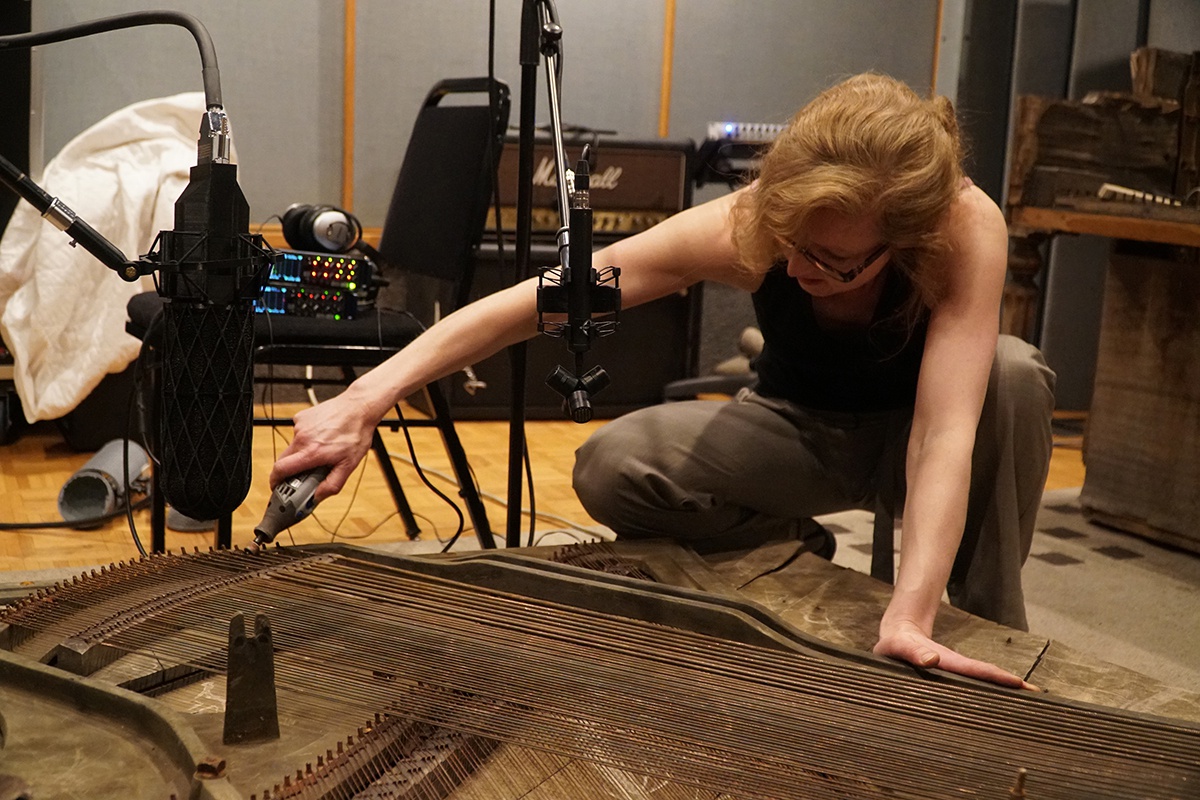 Natasha Barrett réalisant des enregistrements de sources ambisoniques, CCRMA, Stanford © Fernando Lopez-Lezcano
Natasha Barrett réalisant des enregistrements de sources ambisoniques, CCRMA, Stanford © Fernando Lopez-Lezcano
Dans Pockets of Space grand ou petit format, le spectateur/auditeur/visiteur peut agir sur le flux des événements, sa chronologie ou sa vitesse d’écoulement, et donc changer ce qu’il voit et entend, en se mouvant dans l’espace. Il a donc fallu élaborer des fonctions interactives, avec algorithmes et processus de spatialisation en temps réel – ce qui, eu égard à la puissance de calcul nécessaire en temps normal pour le HOA, n’est pas une mince affaire.
« Et, précise Natasha Barrett, ces processus doivent évidemment être susceptibles de créer une bonne musique et une bonne pièce artistique… C’est un travail que j’ai dû commencer très en amont de la création, avant même de savoir sur quel matériau nous allions travailler car je ne peux pas séparer la spatialisation sonore de la création sonore. Il faut que les deux fassent partie d’un même geste. »
par Jérémie Szpirglas, journaliste et écrivain
Photo 1 : Natasha Barrett © Déborah Lopatin
Photo 2 : Natasha Barrett, OpenEndedGroup © Déborah Lopatin
Biographies
Natasha Barrett
Issue d’une famille mélomane mais non musicienne, Natasha Barrett (née en 1972), grandit dans un environnement musical qui mêle cultures populaire et classique. Pendant ses études de composition à l’universit…
OpenEndedGroup (Marc Downie & Paul Kaiser)
L’approche pionnière des arts numériques de Marc Downie et Paul Kaiser combine souvent trois éléments : l’infographie 3D non réaliste ; la prise en compte des mouvements du corps, notamme…



